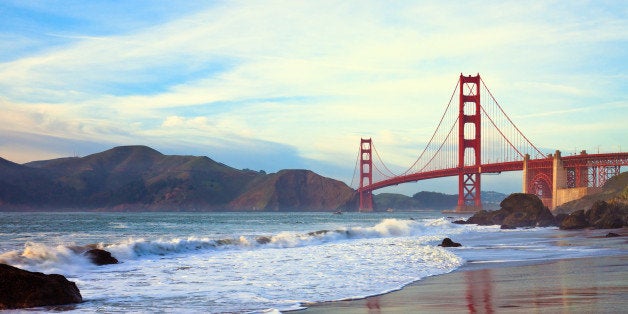
San Francisco Bay is a global treasure. Beyond its famous bridges and waterfront, the Bay is a rich ecosystem in the midst of the fourth largest metropolitan region in the nation. It is the largest estuary on the West Coast of North or South America, the largest salmon producing system south of the Columbia River and the largest stopping point for migratory shorebirds south of Alaska.
The Bay is the defining feature of the region. It is the reason San Francisco and Fisherman's Wharf were founded. It creates our weather and some of our greatest recreational opportunities. It supports our tourism industry, regional economy, and quality of life. It is why so many residents, employers, and visitors recognize that this is a special place where a healthy environment and economy go hand in hand.
Fifty years ago, the Bay Area launched the world's first coastal protection movement in the successful effort to stop the rampant filling of the Bay. At the start of this movement, the Bay was shrinking at a rate of 2000 acres a year. Today, it is larger than it was in 1960, as formerly diked land has been restored to tidal marsh.
Today, our resolve to protect the Bay is being tested by another threat - excessive water diversions that are draining the lifeblood of a remarkable ecosystem. San Francisco Bay is the lower half of a vast Bay-Delta estuary that is fed by a dozen rivers that tumble down the western slope of the Sierra Nevada.
Over the past several decades, the amount of water we divert from the Bay-Delta and its rivers has steadily increased. Today, we divert fully half of the water that falls in its watershed - and even more in critical spring months. The percentage of water reaching the Bay has reached record lows during our current drought. Current standards aren't adequately protecting the Bay. This year, the flow standards that protect the ecosystem - above the flows required to protect the quality of the water diverted by farmers and cities - represent a mere two percent of total flows in the Bay-Delta system.
The drought has caused suffering across California. But impacts to the ecosystem have been catastrophic. Abundance of several fish species has fallen to the lowest level on record. At least six fish species are seriously imperiled, including Chinook salmon and steelhead runs. Additional bird, reptile and plant species are in danger. The drought, in combination with unsustainable water diversions, may be about to begin a wave of extinctions in this ecosystem.
Nevertheless, Central Valley agribusinesses are campaigning to permanently weaken a broad range of federal laws that protect the Bay-Delta estuary. H.R. 2898, which was was drafted in secret by agribusiness lawyers and authored by Central Valley Congressman Valadao, would weaken protections for salmon and other fish species. It would shut down efforts supported by farmers, fishermen and environmentalists to restore salmon in the San Joaquin River.
This legislation is designed to gut environmental protections and divert more precious water from the same rivers that are already overdrawn. The result could be a wave of extinctions and the permanent loss of California's iconic salmon fishery - along with thousands of jobs.
There is another way. Bay Area Congressman Jared Huffman has introduced H.R. 2983, a competing measure that would help meet our water needs through conservation, water recycling (like legislation I authored requiring water recycling in new developments), improving groundwater management, capturing urban stormwater, and using technology to improve the management of our existing water infrastructure. This approach could produce new water supplies that are resistant to the impacts of climate change and future droughts. By focusing on efficiency and reuse, this approach doesn't rely on draining more rivers and further threatening the Bay-Delta estuary.
Unfortunately, Congressman Valadao's bill has passed the House of Representatives and is currently being considered by the Senate. Equally troubling, Congressman Huffman's far superior bill has yet to be granted a hearing by House leadership.
Congressman Valadao's bill cynically attempts to blame federal environmental laws for the water shortages caused by the drought. Gutting these protections won't end the drought, but it will cause permanent damage to California's largest river system.
In these two bills, Congress faces such a stark choice between a mid 20th century anti-environmental bill and a 21st century approach that shows how new technologies can meet our water needs without sacrificing ecosystem health.
California is the nation's wealthiest and greenest state. How we act - and how Congress acts - to ensure reliable water supplies and protect the Bay-Delta ecosystem - will have global implications. A half century ago, California launched a global coastal protection movement. Today, we have an opportunity to launch a 21st century water movement - demonstrating again that environmentally sound policies also benefit our quality of life and economy.
Scott Wiener is a member of the San Francisco Board of Supervisors. He has authored several pieces of legislation to increase water reuse.